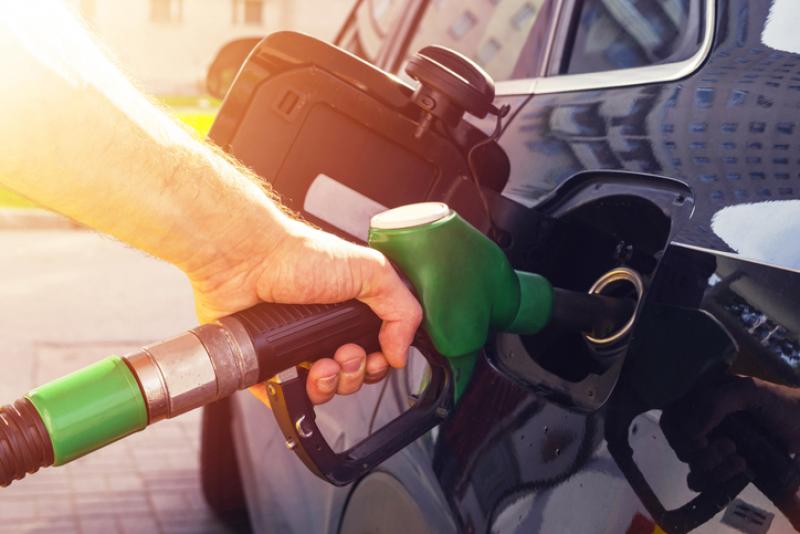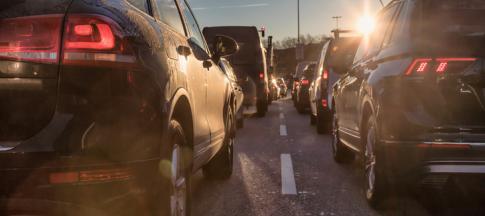
Accidentally filling up your car with the wrong fuel is more common than you might think, affecting an estimated 150,000 motorists every year.
Misfuelling can be disastrous for your engine as well as your pocket, but if you know what do, you could save yourself a lot of hassle and money.
What to do after putting the wrong fuel in your car
Whether you put petrol in a diesel car or vice versa, the worst thing you can do is panic.
If you realise before you start the engine
If you're lucky enough to realise you’ve put the wrong fuel in your car before starting your engine:
- Leave the engine switched off (don't even put your key in the ignition) and inform the staff at the service station. They might advise you to leave your car where it is, or have it pushed to a safe place where you can call your breakdown provider.
- If you don’t have breakdown cover, there are garages and companies that can be called out. Simply Google "wrong fuel" for options.
- If you’re an Admiral Breakdown customer, simply call the 24-hour breakdown assist team who'll arrange a 'drain and flush procedure'.
- Call your insurance provider as soon as possible to tell them what's happened.
If you realise after you start the engine
If you start your car without realising you've misfuelled, both types of fuel will start circulating, damaging your engine.
Petrol engines use an electrical spark to ignite the fuel, while diesel engines burn the fuel by creating high pressure. So, misfuelling is bad news either way.
If you’ve already started your engine, turn off the ignition immediately. If you're already on the move, pull over to a safe spot, then switch off.
Again, call your breakdown provider and inform your insurance company.
Top tip: While misfuelling is a common mistake, not all car insurance or breakdown policies cover you for this, so it’s worth checking your policy documents to see if you're covered.
Which is the worst type of misfuelling?
Putting petrol into a diesel car is the most common form of misfuelling – and the most serious.
Diesel cars use fuel as a lubricant, but petrol is corrosive so it can seriously damage the inside of your engine and your vehicle's fuel pump.
If your car struggles to start, this is a tell-tale sign that you may have put petrol in a diesel tank. Other giveaways include a noisier than normal engine, a loss of power and a smoky exhaust.
Mistakenly putting diesel into a petrol car is much less common, partly because diesel nozzles are larger than the filler neck on most petrol cars.
Misfuelling a petrol engine isn't quite so bad either, but it still needs to be addressed quickly because the diesel clogs the system.
If you're unlucky enough to put diesel into your petrol car, an obvious indicator is a misfiring engine that may also have trouble starting, plus exhaust smoke when you're driving.
How to fix misfuelling
Unless there's more serious damage, draining and flushing the system through (cleaning all contaminated components and removing debris), should do the trick.
However, fuel is highly inflammable, so this kind of work is best carried out by professionals with the correct safety equipment.
Top tips for preventing misfuelling
- Stop and think when you arrive at a service station to refuel – don't go into autopilot mode.
- The colour of the fuel nozzle is the most obvious early indicator (black for diesel, green for petrol), but don't rely 100% on this colour coding.
- Make a habit of reading the label on the pump and nozzle and double-checking with the information on the inside of your car’s fuel flap. A circular ‘E10’ or ‘E5’ label denotes petrol, while a square ‘B7’ sign means it's a diesel dispenser. Confusingly, E stands for ethanol and B for biodiesel.
- If you’re driving an unfamiliar vehicle (it may be a new purchase or a hire car), check and double check the labelling on the car’s fuel flap, and if in any doubt, ask before setting off on a journey.
- If you're a diesel car driver, consider investing in an adapter which replaces the existing filler cap, preventing you accidentally putting a petrol nozzle into a diesel filler neck.
Finally, an added complication. E10 petrol (a blend of petrol and ethanol), isn’t compatible for a small number of older vehicles, including classic cars and some from the early 2000s or before, which still need E5 fuel.
Using E10 petrol could cause engine damage in these cars, so if you're in any doubt, check if your vehicle can run on E10 petrol using the government's simple online tool.
I'm an experienced journalist, digital editor and copywriter, now specialising in motoring. I’m editor of Automotive Blog and have worked across the media in newspapers, magazines, TV, teletext, radio and online for household names including the BBC, GMTV, ITV and MSN. I’ve produced digital content in the financial sector for Lloyds Bank, Nationwide and the Money Advice Service. I'm married with two children and live near Bath in Somerset.



